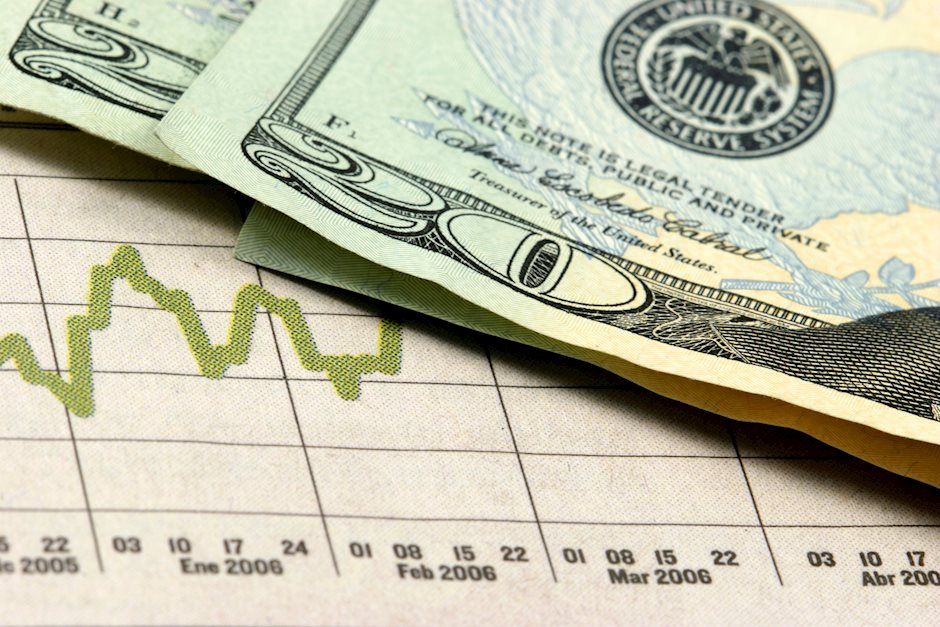US Dollar selloff picks up steam on soft US inflation figures
- US Dollar has continued to weaken against its major rivals following Wednesday’s selloff.
- EUR/USD technical outlook shows that the pair has more room on the upside.
- US Dollar could have a hard time staging a steady rebound as markets eye a looser Fed policy.

The US Dollar (USD) has been struggling to shake off the selling pressure on Thursday after having registered heavy losses against its major rivals on Wednesday. March consumer and producer inflation data from the United States seems to be the primary driver behind the broad-based USD weakness with markets forecasting a strong probability of one or more Federal Reserve (Fed) rate cuts in the second half of the year.
The US Bureau of Labor Statistics (BLS) reported on Wednesday that the Consumer Price Index (CPI) declined to 5% on a yearly basis in March from 6% in February. This reading came in below the market expectation of 5.2%. Furthermore, the Core CPI, which excludes volatile food and energy prices, rose by 0.4% on a monthly basis, down from a 0.5% increase recorded in February.
On Thursday, the BLS announced that the Producer Price Index (PPI) for final demand in the US declined to 2.7% on a yearly basis in March from 4.9% in February (revised from 4.6%). On a monthly basis, the PPI and the Core PPI came in at -0.5% and -0.1%, respectively, triggering a fresh leg of USD selloff.
Daily digest market movers: US Dollar Index extends decline
- The CME Group FedWatch Tool's probability for one more 25 basis points Fed rate increase in May holds above 60%. However, markets see a bigger-than-90% chance that the Fed will lower its policy rate back to the range of 4.75%-5% by September, even if it opts for a rate hike at the upcoming meeting.
- The US Dollar Index (DXY), which tracks the USD performance against a basket of six major currencies, touched its lowest level since early February below 101.00 after having lost 0.6% on Wednesday. 2023-low for DXY is located at 100.82.
- The US Department of Labor's weekly publication revealed that there were 239,000 Initial Jobless Claims in the week ending April 8, up from 228,000 in the previous week.
- Commenting on the CPI inflation data, "the beginning of the end of rate hikes – or the beginning of the countdown toward slashing borrowing costs? That seems to be the message from markets, which are rushing forward to price the next moves of the Federal Reserve (Fed)," noted FXStreet analyst Yohay Elam. "The world's largest economy is experiencing a "process of disinflation" that is somewhat frustrating but is on the right track. Markets are buying it."
- San Francisco Federal Reserve Bank President Mary Daly said on Wednesday that the strength of the US economy and elevated inflation suggests that they have more work to do on rate hikes.
- Earlier in the week, NY Fed’s latest consumer survey revealed that the one-year inflation expectation climbed to 4.7% in March from 4.2% in February.
- NY Fed President John Williams argued on Monday that the pace of Fed rate increases was not behind the issues surrounding the two collapsed banks back in March. On Tuesday, "we've gotten policy to a restrictive stance, now we need to watch the data on retail sales, CPI and others," Williams stated.
- The US Bureau of Labor Statistics reported on Friday, April 7, that Nonfarm Payrolls in the US rose by 236,000 in March, slightly below the market expectation of 240,000. February’s print of 311,000 got revised higher to 326,000 from 311,000.
- Wage inflation in the US, as measured by Average Hourly Earnings, declined to 4.2% on a yearly basis from 4.6% in February. The Unemployment Rate ticked down to 3.5% with the Labor Force Participation Rate improving to 62.6% from 62.5%.
Technical analysis: US Dollar shows no signs of life against Euro
EUR/USD registered strong gains on Wednesday and continued to push higher early Thursday, advancing to its highest level since March 2022 above 1.1050. The Relative Strength Index (RSI) indicator on the daily chart is yet to climb above 70, suggesting that the pair has more room on the upside before turning technically overbought.
1.1100 (psychological level, static level) aligns as the next bullish target before 1.1160 (static level from April 2022) and 1.1200 (psychological level).
On the downside, a daily close below 1.1000 could discourage buyers and open the door for an extended downward correction toward 1.0900 (psychological level, static level), 1.0850 (20-day Simple Moving Average (SMA)) and 1.0800 (psychological level, static level).
What is US Dollar Index (DXY)?
The US Dollar Index, also known as DXY or USDX, is a benchmark index that was established by the US Federal Reserve in 1973. DXY is widely used as a tool measuring the US Dollar (USD) value in global markets. The index is calculated by measuring the US Dollar’s performance against a basket of six foreign currencies, the Euro, the Japanese Yen (JPY), Swedish Krona (SEK), the British Pound (GBP), the Swiss Franc (CHF) and the Canadian Dollar (CAD).
With 57.6%, the Euro has the biggest weight in the index followed by the JPY (13.6%), GBP (11.9%), CAD (9.1%), SEK (4.2%), and CHF (3.6%). Hence, a sharp decline in the EUR/USD pair could help the US Dollar Index rise even if the US Dollar weakens against some of the other currencies in the basket.
Author

Eren Sengezer
FXStreet
As an economist at heart, Eren Sengezer specializes in the assessment of the short-term and long-term impacts of macroeconomic data, central bank policies and political developments on financial assets.

















